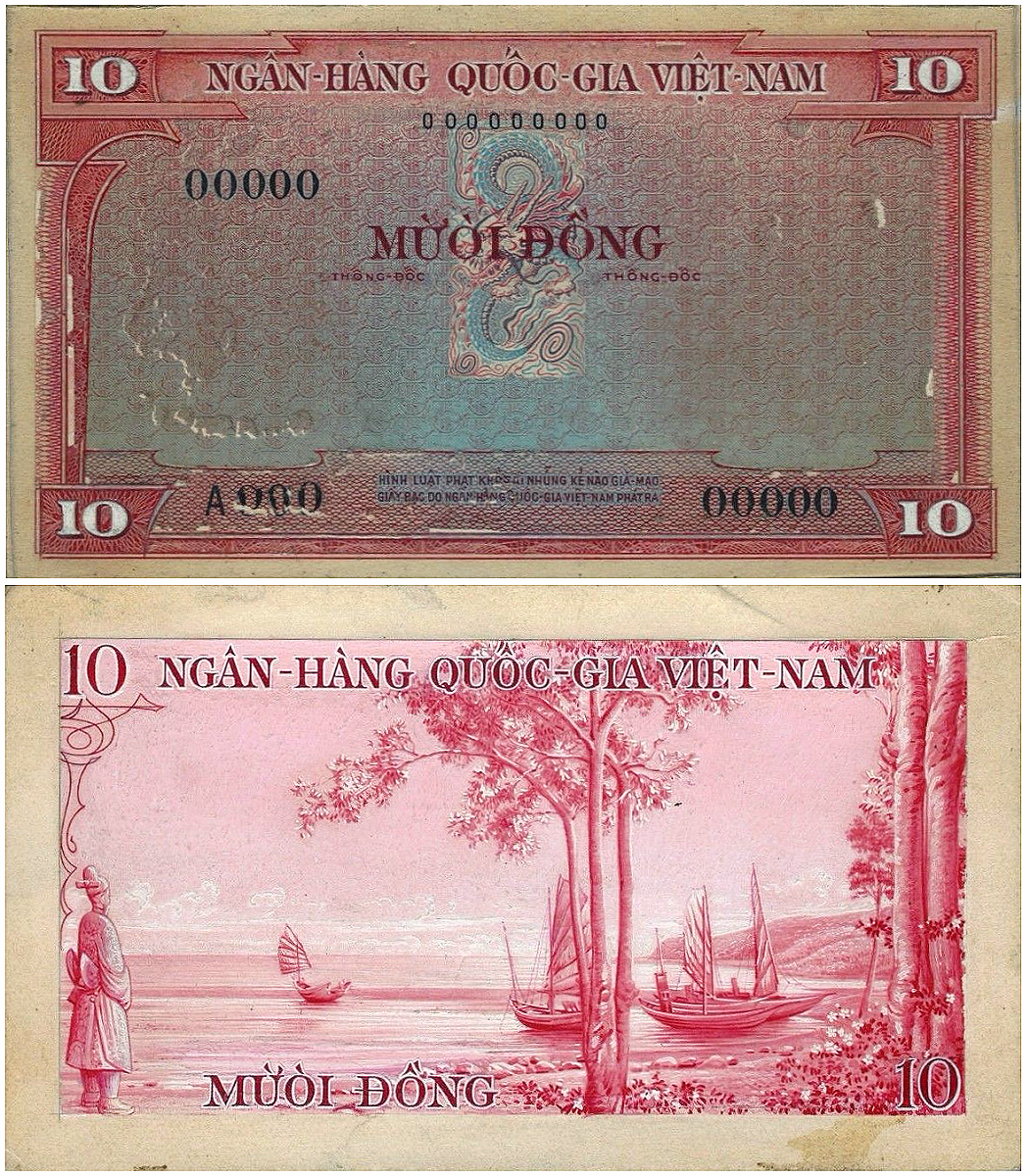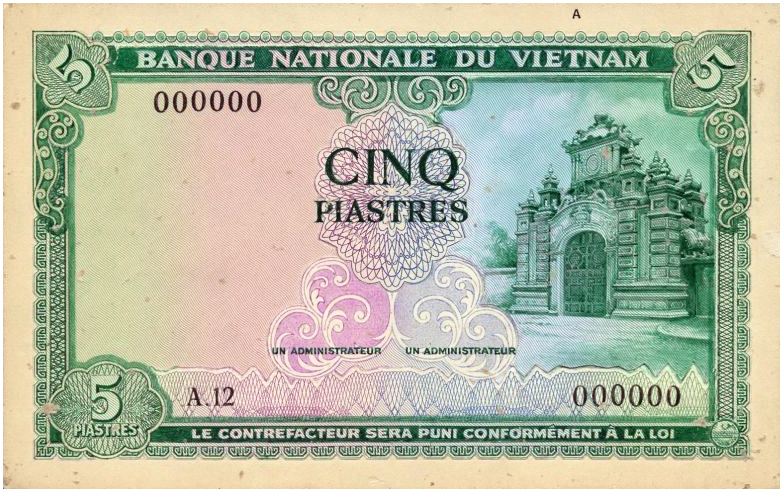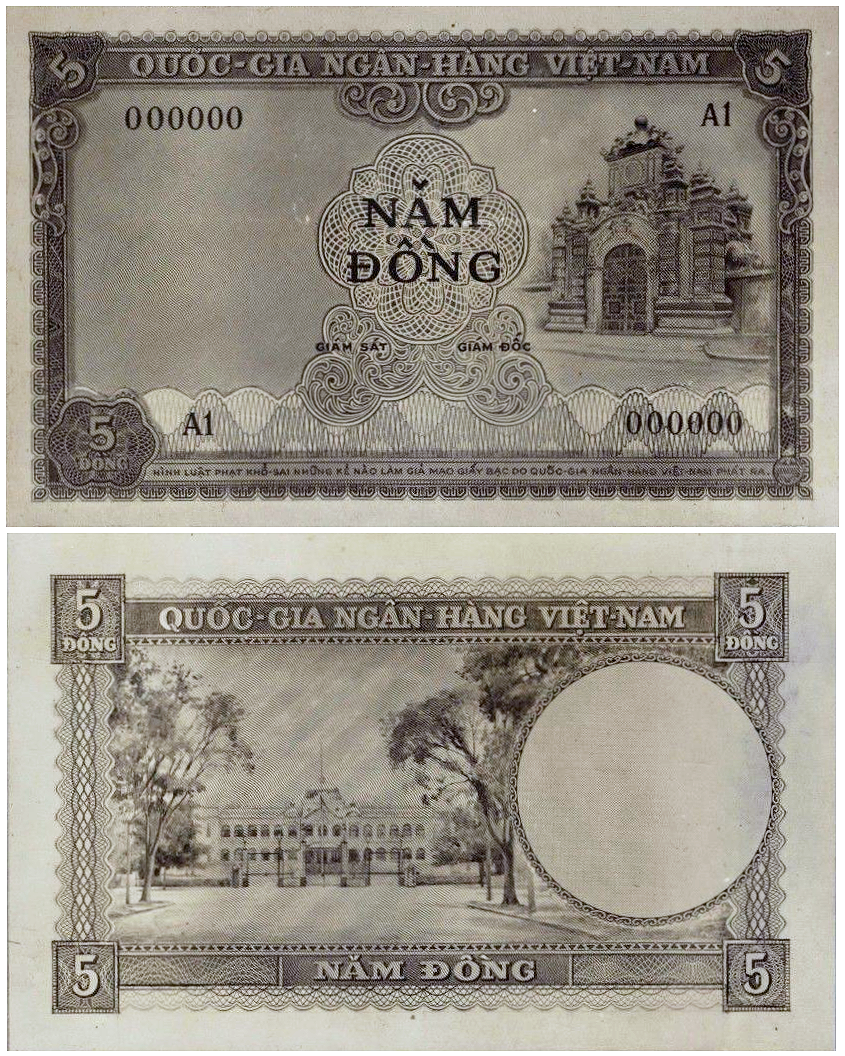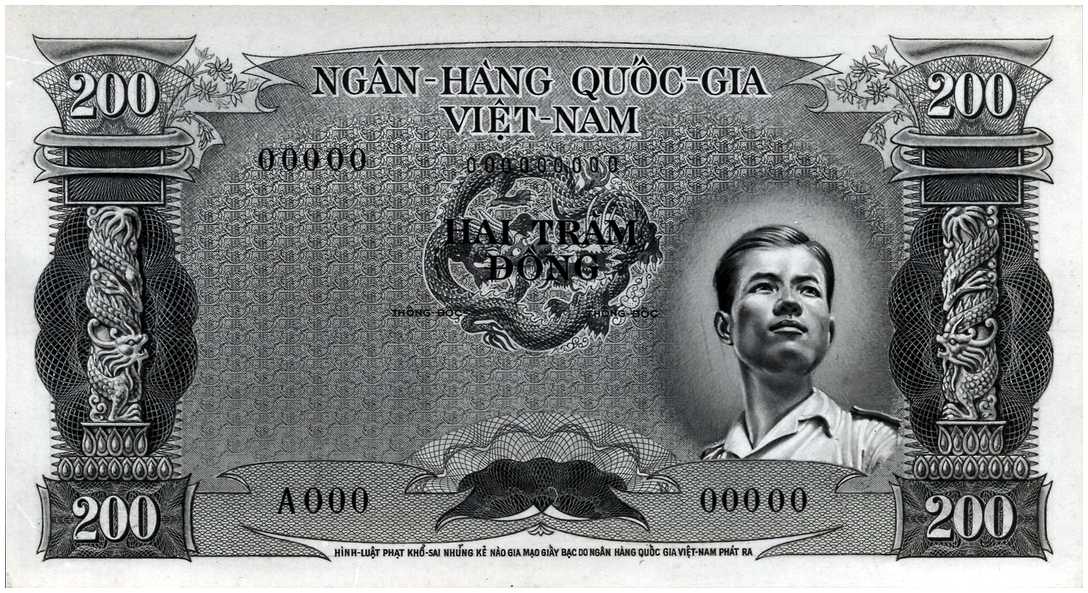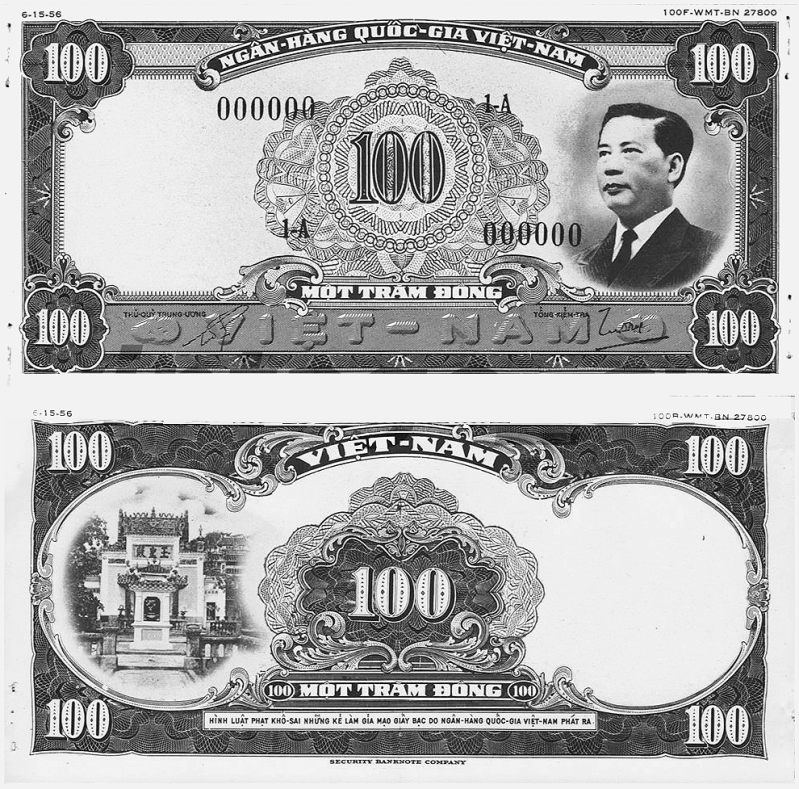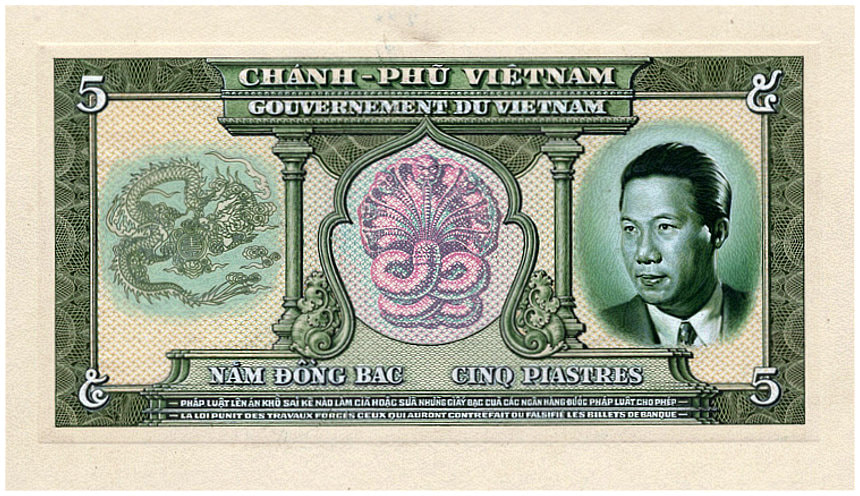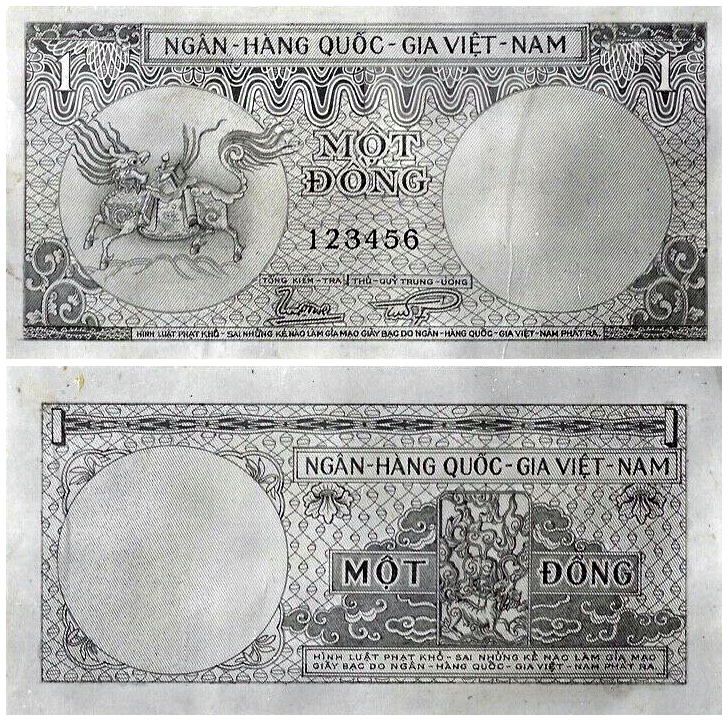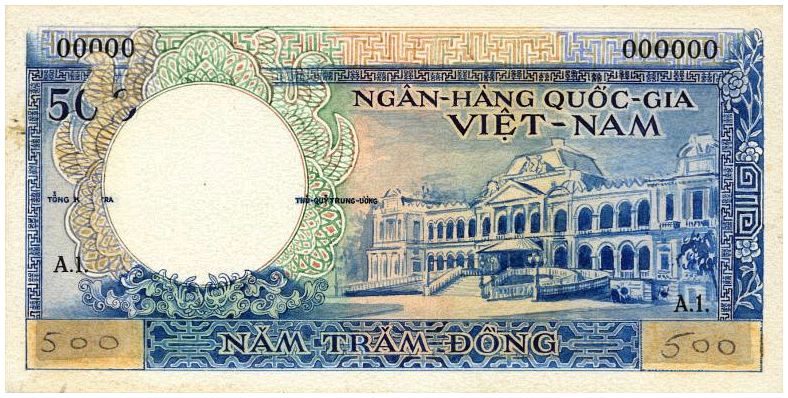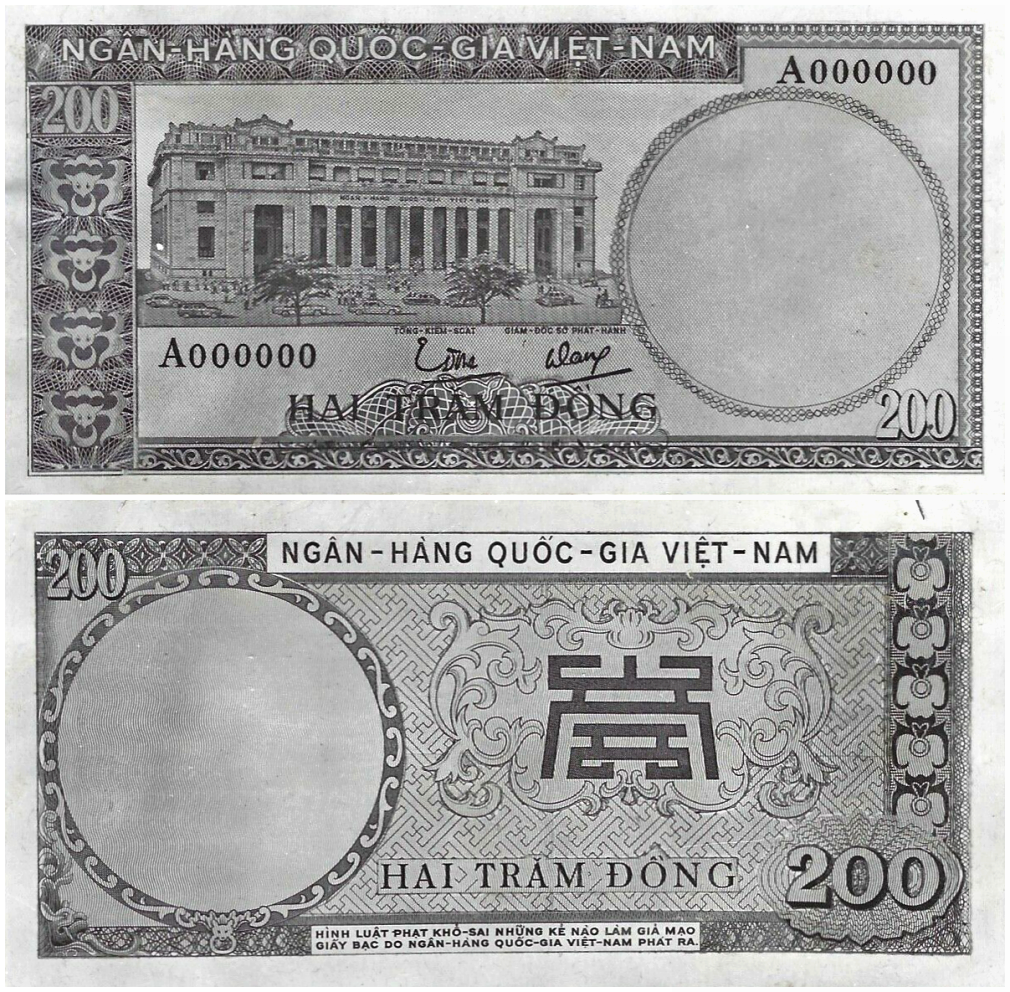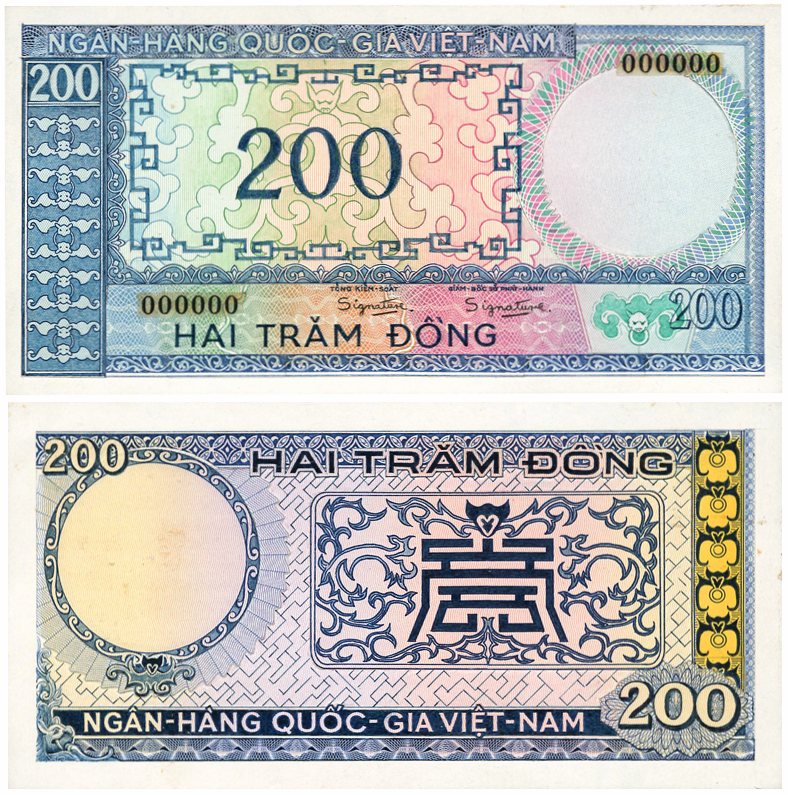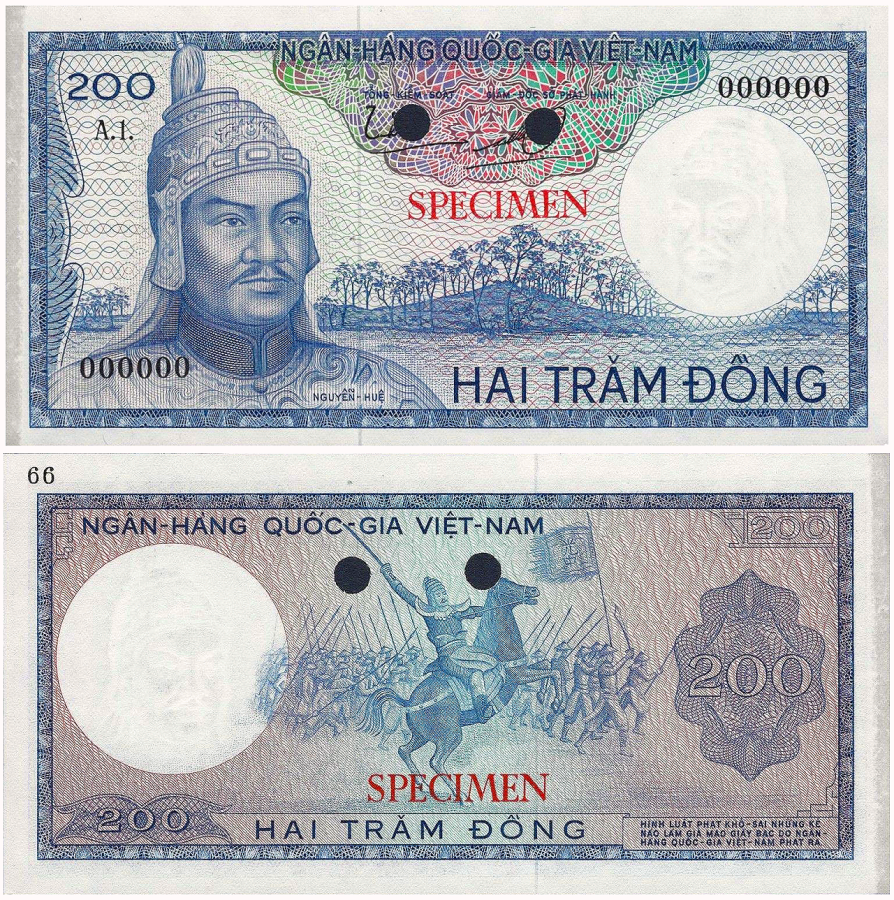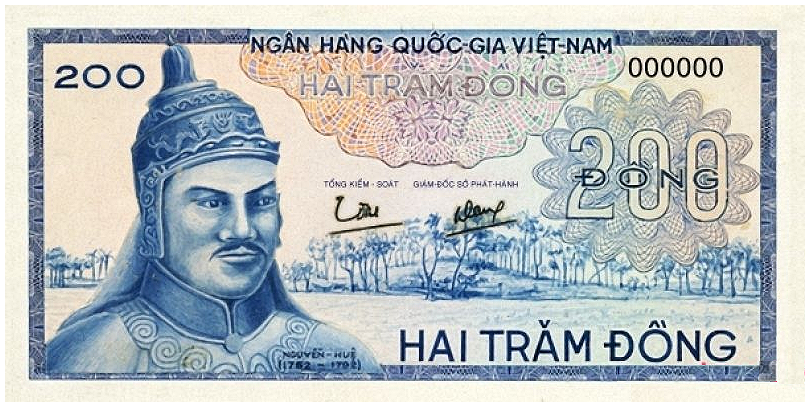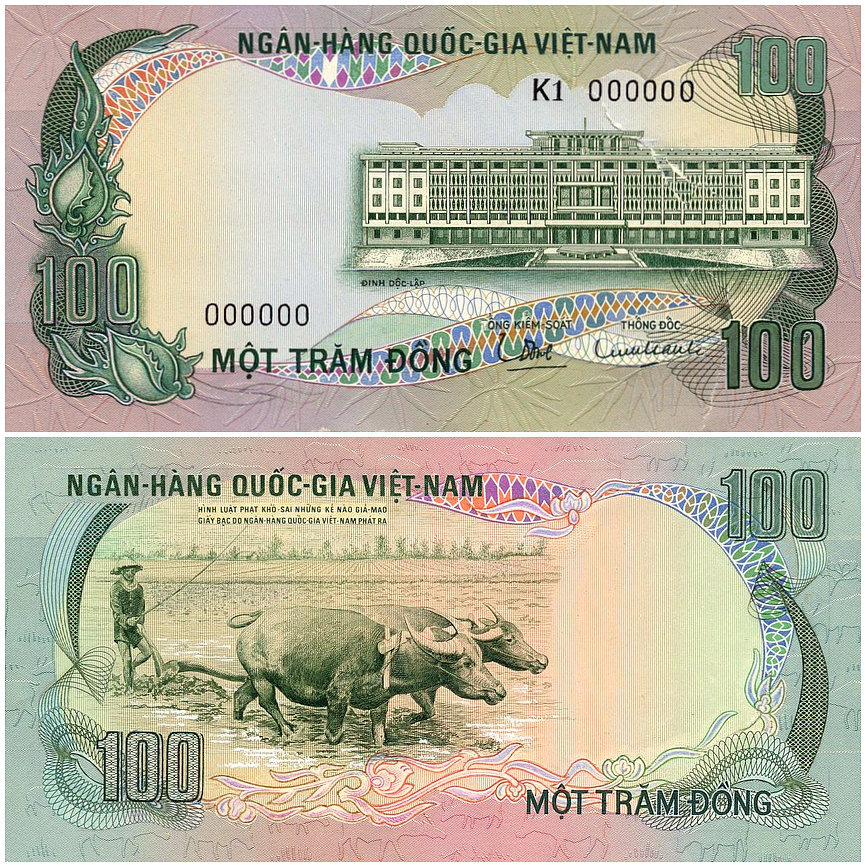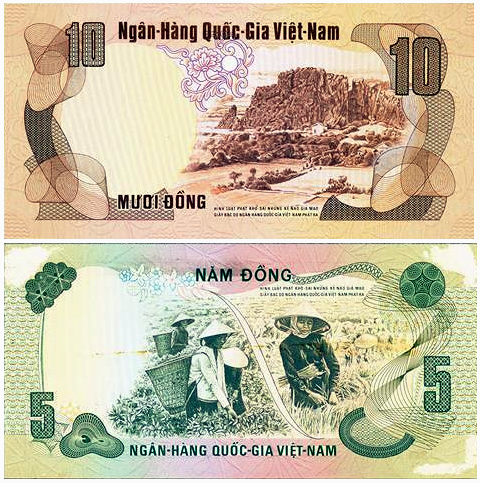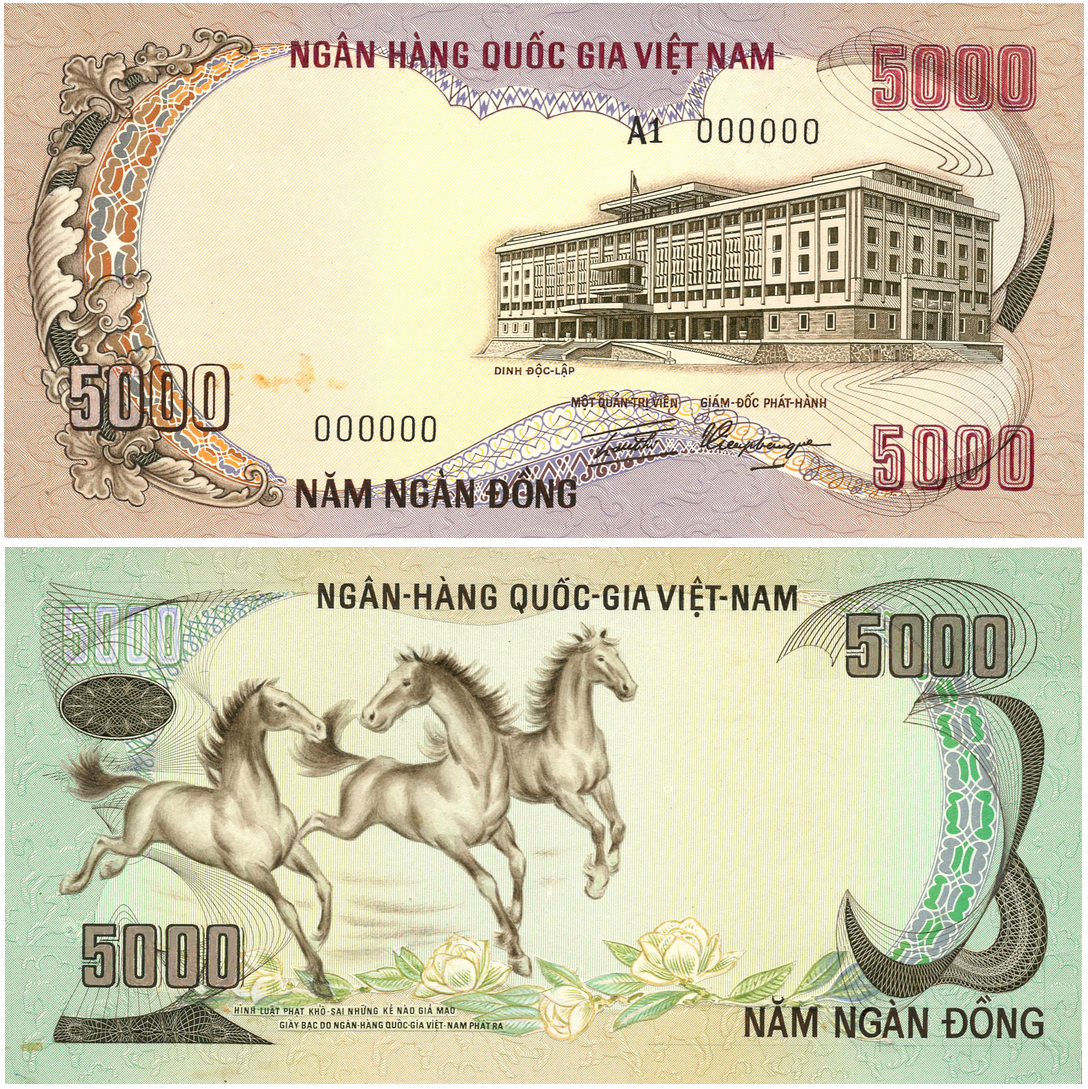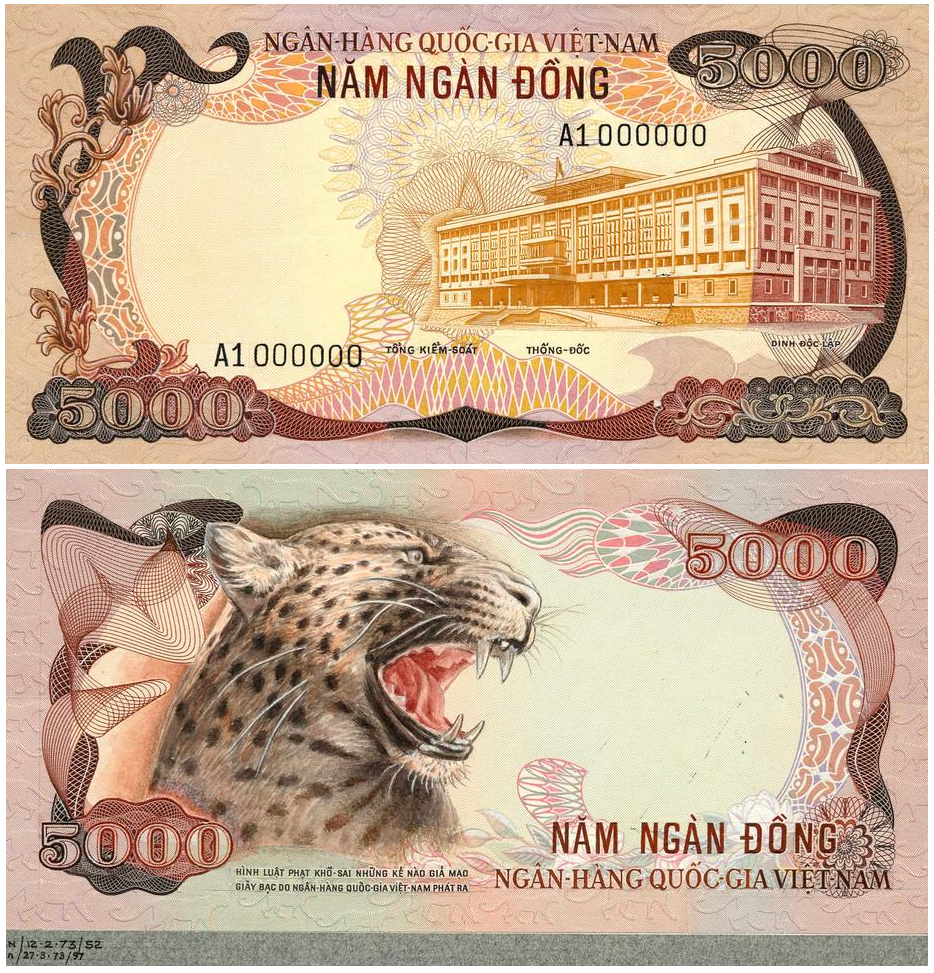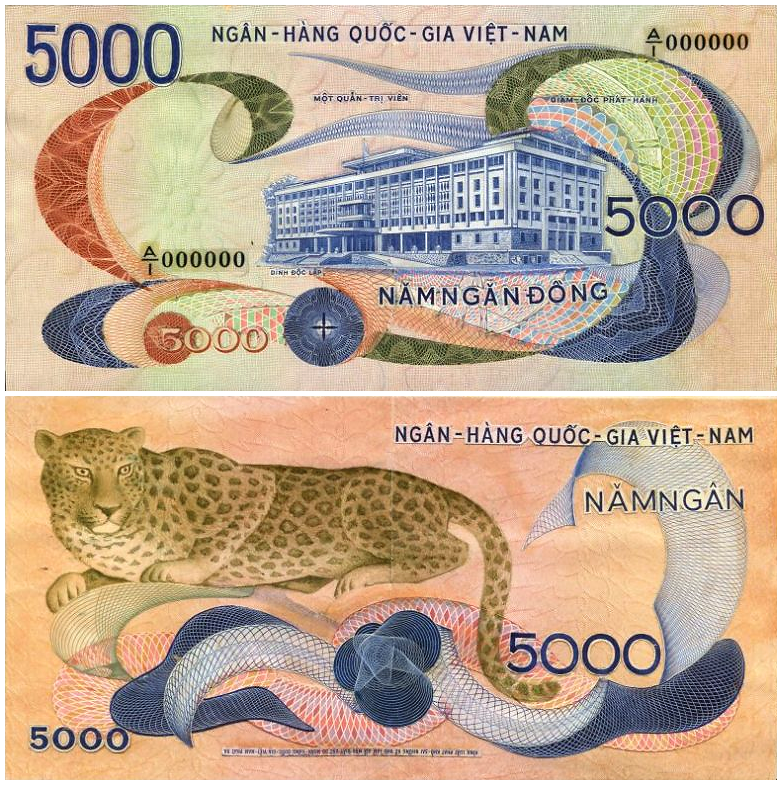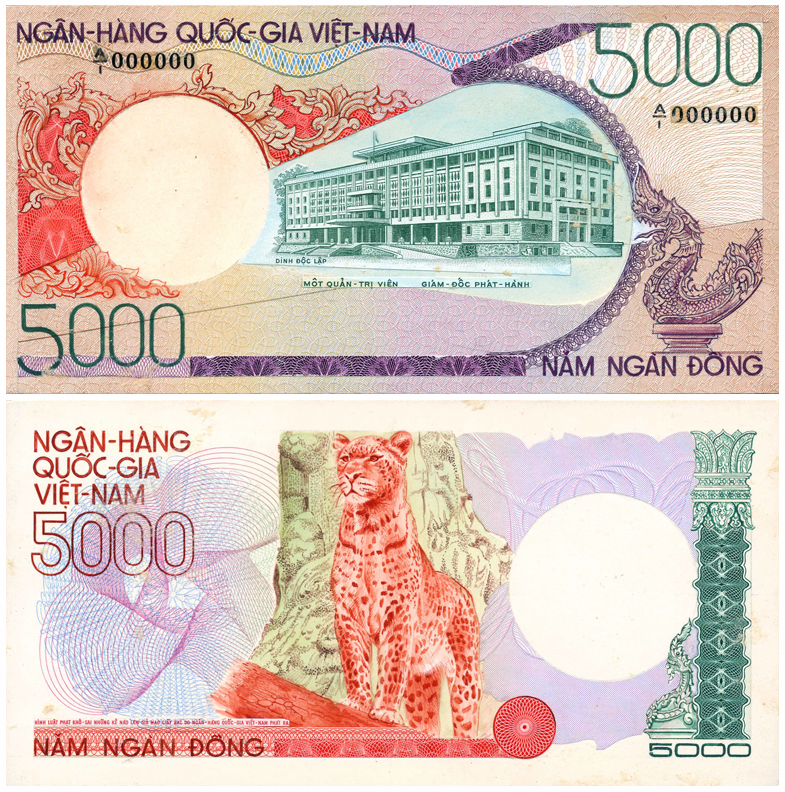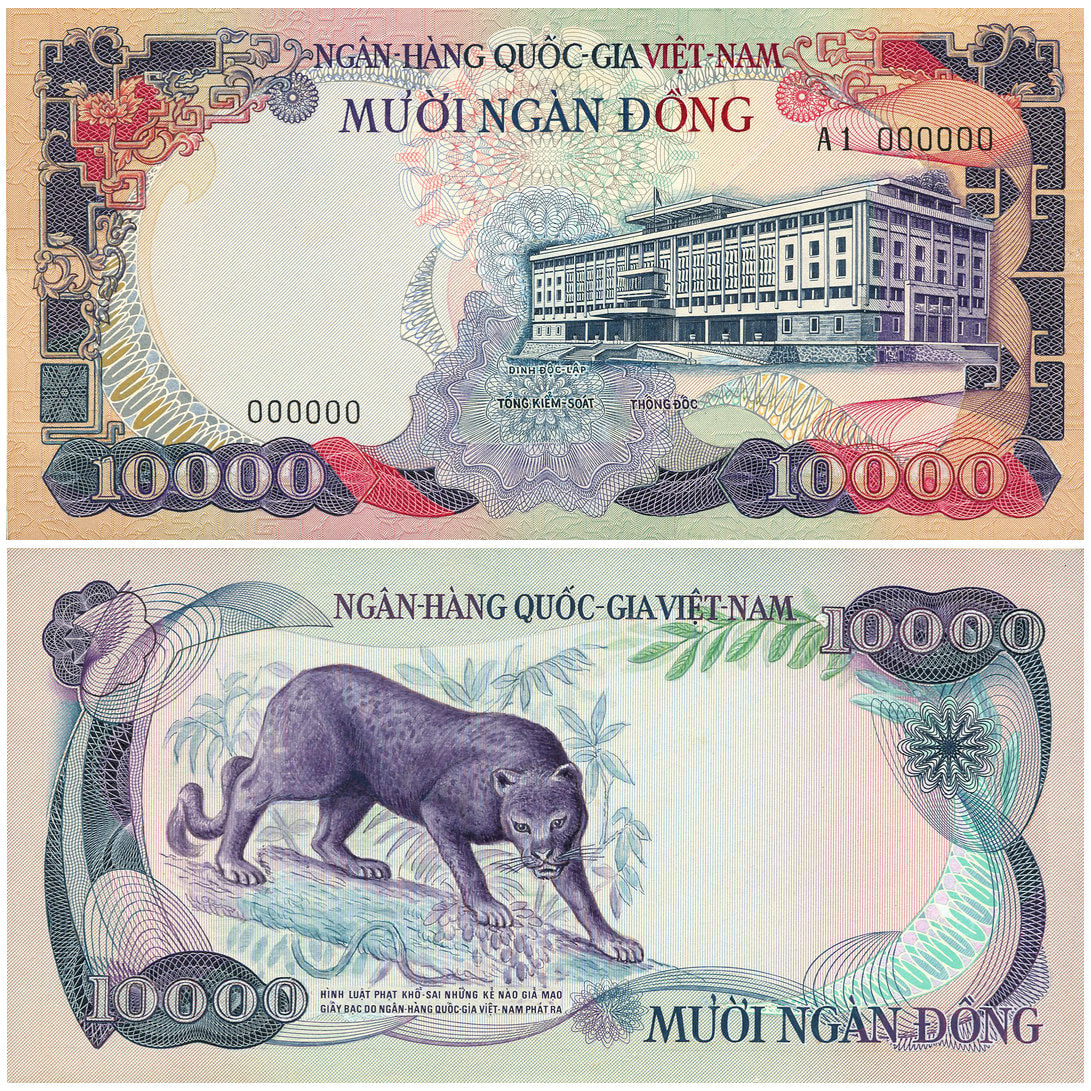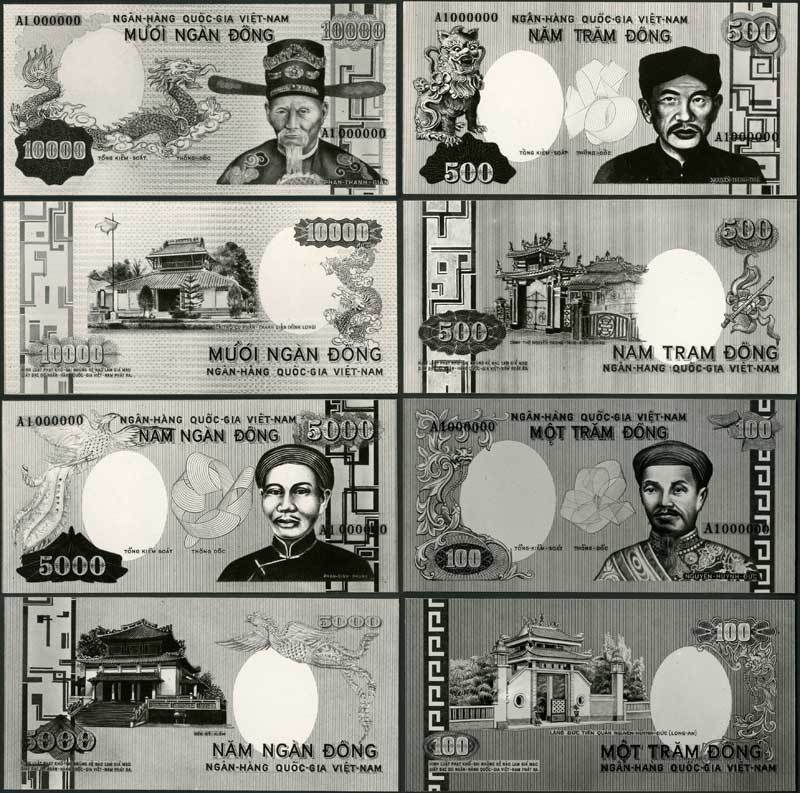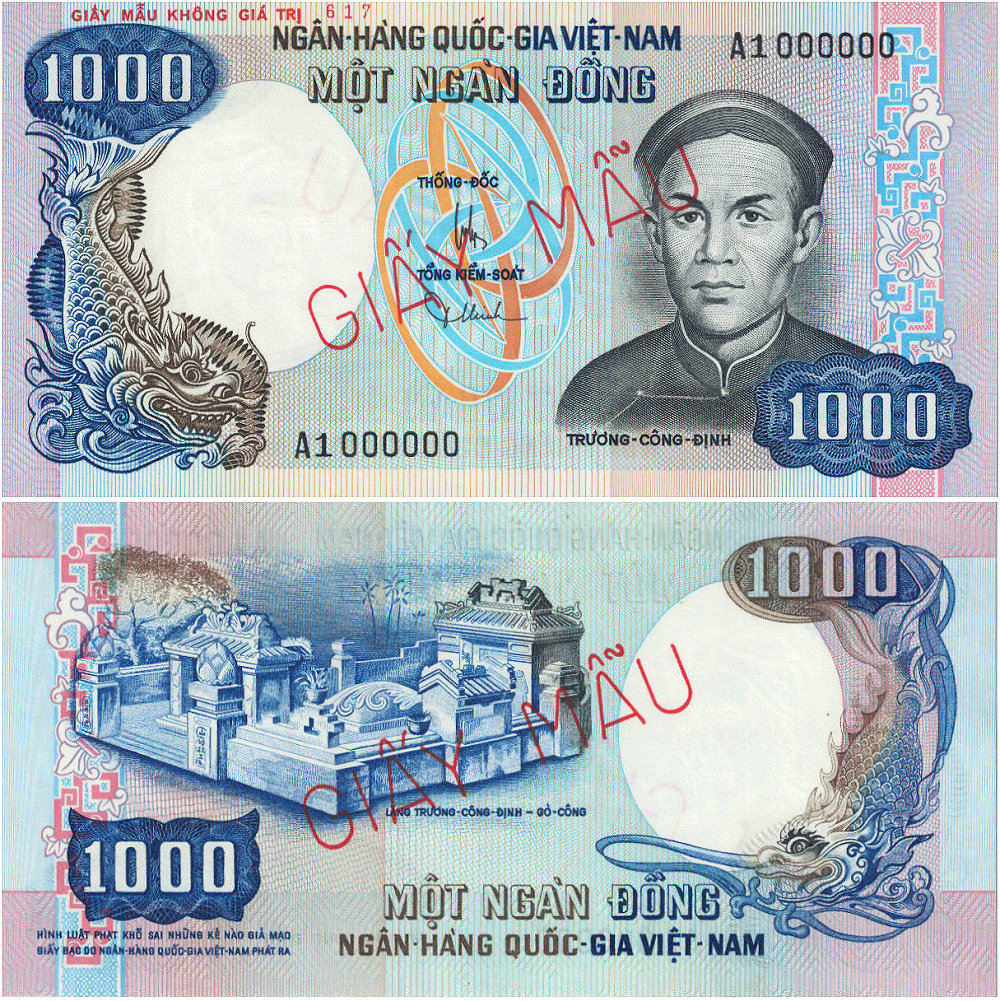Nonesuch Notes - 'Indochina'
|
Updated: August 05 2020
|
A display of unused designs, specimens and little known notes by government banks and other major issuers. These notes are not displayed to scale. More examples will be added periodically.
This section focuses on unissued designs and alternate trial versions of the paper money of Vietnam.
South Vietnam, 1955+
|
Right: A photographic proof of a printers essay for an unissued 5 Dong of the 1950s, by Thomas De La Rue & Co (or Bradbury & Wilkinson). This is similar in style to the 1954 5 Piastres/ Riels/ Dong/ Kip issues of the Institut D'Emission Des Etats Du Cambodge, Du Laos Et Du Vietnam. The building on the back was the Norodom Palace, the former residence of the French governor and later residence of the President of South Vietnam until it's destruction in 1962. Below: a related hand executed essay, with significant differences |
|
Right: a photographic proof for the front of an unissued 200 Dong of 1955, by Thomas De La Rue Ltd, London. Right: a photographic proof for the front and back of an unissued 100 Dong of 1956, by the Security Banknote Company. A 200 Dong design of this series is also known.
The portrait is of Ngo Dinh Diem, 1st President and 6th Prime Minister of South Vietnam - from 1955 until his CIA backed assassination in 1963. |
|
Right: A colour trial by Thomas De La Rue of the 200 Dong of 1966. Personally, this would have been a better choice than the issued brown. (front) Nguyen-Hue at left - also known as Emperor Quang Trung - was the second emperor of the Tây Sơn dynasty of Vietnam, reigning from 1788 until 1792. (back) Mounted warrior (Nguyen-Hue) leading troops into battle. |
Below: (left) a printers essay and (right) a photographic proof of an essay for a 200 Dong note of c1960. They are probably not a matching pair, though both are most likely a product of De Le Rue & Co.
South Vietnam 1970 - 1976
|
Right: a two part specimen of the unissued 5000 Dong of 1973 (SCWPM P-35). Thomas De La Rue & Company Ltd, London. The building, which apears on many of the 1970s notes, is the Independence Palace (Dinh Độc Lập), also known as Reunification Palace (built 1966), in Ho Chi Minh City (Saigon), and was the residence of the President of South Vietnam. This stands on the site of the former French colonial Norodom Palace, completed in 1873 and destroyed in 1962 when two South Vietnamese Air Force pilots rebelled against orders to attack the Viet Cong, and bombed the palace instead. |
|
Right: Photographic proofs of a group of designs for a never to be issued series of 1975, depicting historical figures and buildings. These were most likely produced by Thomas De La Rue & Co. The portrait on the 1000 Dong is of Phan Thanh Giản (1796–1867), a Grand Counsellor at the Nguyễn court in Vietnam. He led an embassy to France in 1863, and committed suicide when France completed the invasion of Southern Vietnam (Cochinchina) in 1867. |
|
Right: 1000 Dong of 1975, Thomas De La Rue & Co. This was never issued to due to South Vietnam's defeat by the North in 1975. The portrait is of Truong Cong Dinh (1820-1864), a mandarin in the Nguyen dynasty of Vietnam under Emperor Tu Duc. He is best known for leading a guerrilla army in southern Vietnam, continuing the fight against the French invasion in defiance of the emperor. He has been described as "a man with a high concept of duty, an awareness of his own weakness and with a sense of despair, common to many of his countrymen, at the ambivalence of the Huế court". Dinh was a popular figure among both the North and South Vietnamese. His tomb at Gò Công, Tiền Giang, is depicted on the back. |
